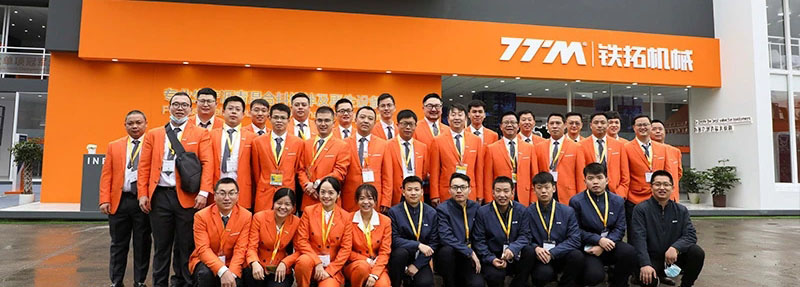Ever wondered why more DOTs and private pavers are googling “rap recycling hot mix asphalt plants services” at 2 a.m.? The short answer is simple: budgets are shrinking, virgin aggregate prices are sky-rocketing, and sustainability metrics are now printed in every annual report. The longer—and far more interesting—answer is buried in the way modern plants handle reclaimed asphalt pavement (RAP) without turning your smooth ride into a pothole festival.
First Off, What Exactly Counts as RAP?
RAP is not just “old black stuff” you mill off a highway. It’s a tightly controlled blend of aged asphalt binder and high-quality aggregates that have already proven they can survive years of traffic and freeze-thaw cycles. When contractors mention rap recycling hot mix asphalt plants services, they’re really talking about a chain of processes—milling, fractionating, testing, blending, reheating, and lay-down—that give these discarded roads a second life. Fun fact: a single mile of four-lane urban freeway can cough up roughly 18,000 tons of RAP. That’s nearly 1,200 truckloads of material begging for a second chance.
Why the Sudden Rush Toward 40 %, 50 %, Even 100 % RAP Mixes?
Let’s talk numbers that make finance managers smile. Virgin binder alone accounts for up to 60 % of an asphalt mix’s material cost. Swap in 40 % RAP and you’ve erased roughly 24 % of that line item before the first truck even backs up to the paver. Do that on a 100,000-ton interstate rehab and we’re talking about savings north of one million dollars. Yep, seven figures.
But cost is only half the story. Agencies now score bidders on carbon footprint, and several states—looking at you, Colorado and California—offer bid-price reductions when you hit sustainability targets. In plain English: recycle more, win more work, and fatten your profit margin without sharpening your pencil on every other bid item.
Inside the Plant: How RAP Recycling Hot Mix Asphalt Plants Services Pull Off the Magic
1. Precision RAP Crushing & Screening
Random chunks won’t cut it. Modern services crush RAP to tight top-size specs—usually ½ in. (12.5 mm)—then screen it into at least two fractions. Overs return for another pass; mids report to the cold-feed bins. This step alone boosts plant uptime by 15 % and keeps the “blue smoke” complaints from neighbors at bay.
2. Parallel-Flow Drying vs. Counter-Flow Systems
Older parallel-flow drums scorch RAP at the burner end, oxidizing the binder and making the mix brittle. New-gen counter-flow plants introduce RAP downstream, away from the naked flame. Result: the aged binder stays workable, and your recycled mix keeps the low-temperature cracking resistance you need in, say, Minnesota Februarys.
3. Virgin Binder “Rejuvenator” Injections
Here’s the cool part: engineers inject engineered rejuvenators—sometimes bio-based, sometimes aromatic oil blends—at 0.3 % to 0.6 % by weight of mix. These chemicals re-balance asphaltenes and maltenes, restoring ductility so the recycled mix performs like a 100 % virgin recipe. Think of it as a spa day for tired asphalt molecules.
4. Real-Time NIR & Gamma-Temperature Sensors
Plants worth their salt now mount near-infrared (NIR) scanners above the belt and gamma detectors inside the drum. These gizmos read binder content, moisture, and temperature every 30 seconds, auto-tweeaking feeder gates and burner fuel. Translation: consistent mix, fewer rejected loads, and no 3 a.m. phone call from an angry project manager.
Case Snapshot: Pennsylvania Turnpike 2022 Overlay
Instead of trucking 62,000 tons of RAP to landfill, the turnpike authority ground, hauled back, and recycled 94 % of it into a high-modulus overlay. The rap recycling hot mix asphalt plants services provider guaranteed a 12-year fatigue life, but early rutting tests already show performance on par with virgin SMA—at 28 % lower unit price. Taxpayers saved $3.4 million and 3,900 metric tons of CO₂. Not bad for a day’s work.
But Will High-RAP Mixes Really Last?
Skepticism is healthy. The key is balanced mix design: equal parts smart processing, accurate binder blending, and tight quality-control. When those boxes are checked, National Center for Asphalt Technology (NCAT) track data show 50 % RAP mixes can match the rut resistance and cracking tolerance of virgin mixes. Translation: your road won’t disintegrate before the next election cycle.
Three Quick QA Tips for Specifiers
- Cap RAP dust ratio at 1.6 to avoid stiff mixes that crack under thermal stress.
- Demand virgin binder grade bump (e.g., PG 64-22 to PG 58-28) when RAP exceeds 30 % in surface courses.
- Insist on contractor-provided gyratory compaction data at Ninitial, Ndesign, and Nmax to catch tender mixes early.
Choosing the Right Rap Recycling Hot Mix Asphalt Plants Services Partner
Not every outfit with a couple of cold-feed bins can handle 50 % RAP without turning your mix into a blue-smoke barbecue. Look for:
- Proven Track Record: Ask for previous DOT projects with ≥40 % RAP. If they can’t show QC data going back five years, keep walking.
- Fractionated Stockpiles: Plants that keep three or more RAP fractions give you tighter control and better volumetrics.
- Rejuvenator Injection System: Metered pumps, flow meters, and calibrated tanks prove they’re not just dumping waste oil into the drum.
- Environmental Permits: Thermal oxidizers, blue-smoke capture rings, and real-time opacity monitors keep you on the right side of EPA inspections.
Bottom Line: RAP Recycling Isn’t a Fad—It’s Financial Life Support
Between volatile oil prices, aggregate shortages, and ever-tightening environmental regs, contractors who ignore rap recycling hot mix asphalt plants services are basically handing the next job to smarter competitors. So, ready to future-proof your next bid? Get your mix designer on the phone, quiz potential plant partners with the checklist above, and watch your profit per ton climb while your carbon count drops. Oh, and the next time someone tells you recycled asphalt is “second rate,” just smile and show them the Pennsylvania Turnpike numbers. That usually shuts them up pretty quick.

